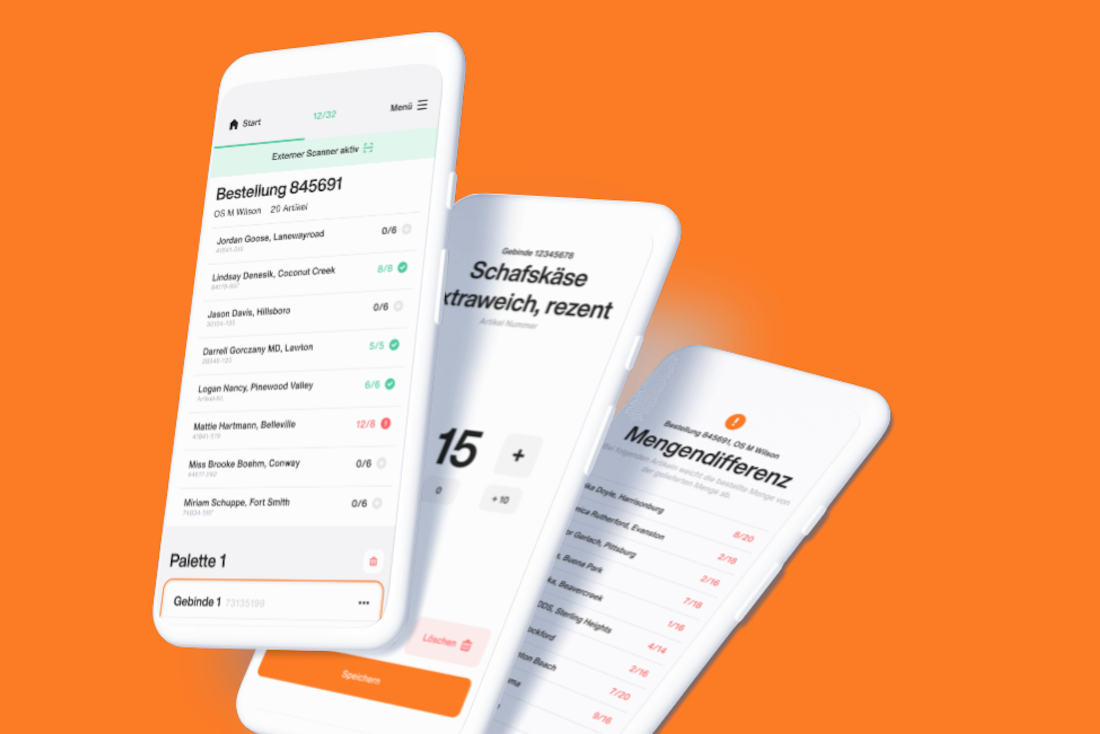So you want an app in the Appstore?

Here you can find out why it's worth developing an app and what options you have. We explain why mobile apps are so powerful, how you can get onto your customers' smartphones and whether a native app or a progressive web app (PWA) is the right choice for you.
Have you thought about publishing an app in the App Store? Mobile apps are a powerful tool to bring your brand and services directly to your customers. Find out why it's worth developing an app and what options are available.

Why an app?
Nowadays, the average person spends over three hours a day on their smartphone. Over 90% of this time is spent in apps. (The rest is spent in the browser or perhaps in the settings).
An app brings your brand and services directly to your customers, provides round-the-clock access to your products and increases both reach and customer loyalty. The smartphone is a constant companion and an app allows you to be present and reach your customers at all times.
A battle for attention
On average, there are around 80 apps on a smartphone, but only 9 of these are used every day and around 30 every month - so more than half of the apps are never used at all. This means that being in the app store is not enough, your app must remain on the devices and be used regularly. So you have to offer real added value.
How did I get my smartphone in the first place?
The goal is not to be in the app store, but to end up on smartphones and find a permanent place there. There are various approaches to this. The first question you need to ask yourself is: Native App or Progressive Web App (PWA)?
What is a PWA?
The advantages of PWAs lie in their Cost efficiency and Platform independence. They offer an excellent user experience and are particularly suitable for applications that do not require deep device functions.
A Progressive Web App (PWA) combines the best features of web and app. It is developed with HTML, CSS and JavaScript and still feels like a native app. This is because a PWA can access functions such as the smartphone camera or peripheral devices and recently also offers the option of push notifications on iOS. It runs in the browser, but can also be installed like a native app.
As PWAs are developed like websites, the development time is shorter and the costs are lower. In addition, they do not have to be distributed via the app store, which simplifies and speeds up the release process. Anyone who has ever launched an app in the stores knows how laborious and time-consuming this can be.

What is a native app?
A major advantage of native apps is their ability to utilize the full performance and functionality of the device hardware. This enables an excellent user experience, especially for resource-intensive applications such as games or complex data processing applications.
Native apps are specially developed for a specific operating system, either iOS or Android. They offer the best performance and the most extensive access to native device functions. Native apps are created with the respective platform languages and tools, which enables optimal integration and use of the hardware.

What technologies are available
- Swift (iOS): With Swift, you can develop quickly and efficiently for iOS. The advantage is direct access to all native iOS functions. However, development is expensive and limited to Apple devices.
- Java (Android): Java is a widely used programming language. You will therefore find a relatively large number of developers who are proficient in this language. The disadvantage is the extensive boilerplate code, which can make development time-consuming.
- Kotlin (Android): Kotlin offers a modern and efficient syntax and a good ecosystem. However, there are fewer libraries and resources for the relatively young programming language.
- Kotlin Multiplatform: With Kotlin Multiplatform, you can develop for several platforms at the same time. However, there are (still) limitations with the native APIs and the technology is not yet fully mature.
- React Native: This technology allows you to develop for all platforms with a single code base. JavaScript is extremely widespread and the ecosystem is large. However, native performance suffers and access to native APIs is limited.
- NET MAUI: This new technology offers a standardized code base for all platforms and is particularly attractive for .NET developers. However, it is still relatively new and has a smaller community.
- Flutter: Flutter offers really high performance thanks to native compilation and a fantastic experience for developers (developer experience). The ecosystem of plugins and the community are huge. The disadvantage is the little-used Dart programming language and a certain dependency on Google.
- PWA: PWAs are developed like websites, which then feel like an app. They are platform-independent and extremely cost-efficient. And not only in development but also in ongoing operation. However, a PWA does not offer quite the same extensive device integration as a native app.

What do I use to build my app now?
There are three main things you should consider when choosing the right technology:
Budget: PWAs are usually less expensive to develop than native apps. Think about how much you want to invest and whether you can justify the additional costs for a native app.
Features: Do you need specific functionsthat only a native app can offer? PWAs have limitations when it comes to accessing deeper device functions. If you want features like GPS tracking, Extensive hardware integration or complex animations, a native app might be the better choice.
App Store: Does your app have to really in the App Store or is a PWA that looks cool and feels like a native app enough? The big advantage of a PWA is that you can avoid the complicated and sometimes lengthy App Store approval process bypass. Also for the updates.
You don't have to make the choice alone - we know the details and will be happy to advise you.
Summary
If you want to develop a native app Flutter due to its performance, Developer Experience and the large ecosystem is the best choice. If budget plays a bigger role and you are not dependent on certain device functions, a PWA is the best solution. Both approaches have their advantages and disadvantages, and it depends on what requirements and goals you are pursuing with your app.
Ready to bring your app to your customers' smartphones? Let's get started together and make the most of the possibilities!

Written by
Josh Wirth





